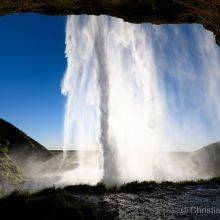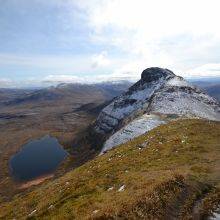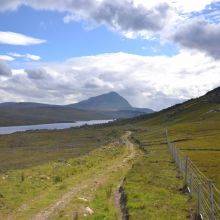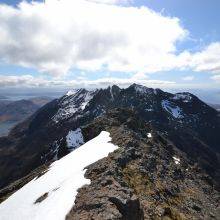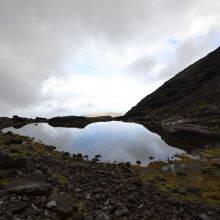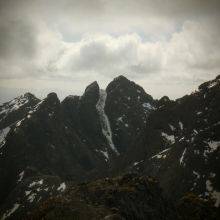When Is the Best Time
Dyrhólaey is popular for puffin watching and its spectacular views of the volcanic arch, the sheer cliffs, and the lighthouse. The unique peninsula on the south coast of Iceland is easy to reach from Reykjavik in 2.5 hours and is just a 20-minute drive from Vik.
Dyrhólaey is pretty busy during the day in summer, especially in July and August. To beat the crowds and spot puffins, the best time to visit is either early morning or evening before the tour busses and day-trippers arrive or have left.
Can You See Puffins at Dyrhólaey?
Yes, these cute birds arrive at the cliffs for breeding in April and stay at least until the end of August, occasionally until mid-September. Puffins are at the cliffs and close to the viewpoint in abundance in the morning and evening. They are out at sea to catch fish during the day.
Puffins are the indication of spring. When they arrived from the sea, the locals know the summer will start soon. May and June are lovely months with fewer holidaymakers if you plan to visit Iceland. Some puffins are close up a sheer number in the distance.
Weather in the South of Iceland

It is a subpolar oceanic climate. Vik in the south of Iceland experiences the "warmest" temperatures of the entire country. May to September are the most pleasant months regarding the temperature. The temps range on average from 7-13°C and topping 20°C sometimes in summer.

The driest month are April-July. From August until January, the amount of precipitation is above 200 mm. November to March are cold day temps range from 4-1°C, and nights are freezing. Expect snow and ice on the roads and walking paths.
Overall regarding the temperature and the amount of rainfall, May - July are the best months for your vacation in the south of Iceland. Most important, it is frequently windy here. A windproof jacket or softshell jacket is well needed.
Nearby TipComing from Reykjavik, you pass by the magnificent waterfalls Seljalandsfoss and Skogafoos on the Ring Road. Don't miss out on my detailed guide about these waterfalls. Google Maps detailed directions from Reykjavik to Seljalandsfoss, Skogafoos, and Dyrholaey |
These are my recommended tours via GetYourGuide. Thx for booking via my website! With your support, I am able to provide all information first-hand. Tour prices are at no extra cost!
Which Camera Do I Use?
Most of my shots were taken with my Olympus OM-D EM 10 Mirrorless Micro-Four-Thirds camera. I love it so much because it’s not too big for my hands and I can carry it easily everywhere. The wonderful EVF is extremely bright and works perfectly outdoors. I never go without my camera.

I use a Mark II and Mark III but my next one will be the OM-D E-M5 because the body is splashproof, dustproof, and freezeproof and provides a better image stabilization. Especially during rain, in the rain forest or close to a waterfall it is sometimes impossible to use the camera. During our road Trip through Utah and Arizona I had issues with the strong wind and the sand. I had to cleaning my camera daily.
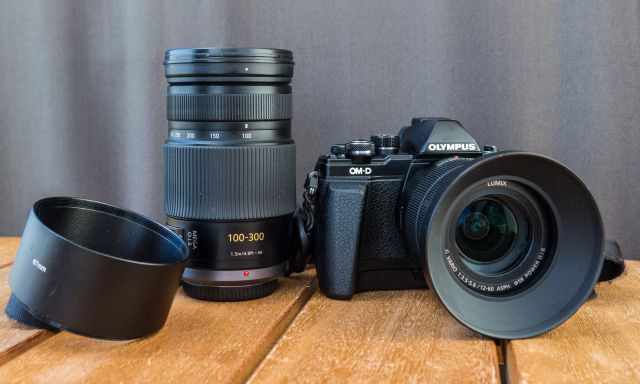
My day-to-day lens is a Panasonic Lumix G Vario 12-60 mm. The Micro-Four-Thirds Sensor makes it easy to use Panasonic Lumix G Vario 100-300 mm which is equal to a 200-600mm lens for an APS-C Camera for shooting long range.
Best Months to Visit
Location and Tips

Dyrhólaey is an outstanding spot for puffins and the southernmost point on the mainland of Iceland. The rock arch and its surroundings became a nature reserve in 1978. This promontory means "door hill island" and is 120 m high. You are able to walk onto this rock arch. No entrance fee is requested for the nature reserve and parking.
This fascinating location was part of the Game of Thrones scenes at Eastwatch by the sea in season 7.
Parking
The 13 m high lighthouse built in 1927
You can park your car roughly 1.5 km away at the bottom of the hill. There are restrooms available at the parking. It is a beautiful coastal walk up to the top and viewpoint. There is a bumpy gravel road leading to the lighthouse but suitable for 4 WD only. Parking Google Maps
Opening Times
In May and June, open from 9 am to 7 pm to protect the nesting birds like the arctic terns. The rest of the year, Dyrhólaey is open throughout the day.
4 Top Tips

Dyrhólaey is 120 m high.
- Take the coastal walk from the parking and enjoy the breathtaking scenery.
- Bring a softshell jacket for the strong and cold wind.
- Bring a zoom camera and binoculars to observe the puffins.
- Don't miss out on the black sandy beaches of Dyrhólafjary and Reynisfjara with their basalt columns. You even may spot seals.
Plan Your Visit
- Dyrhólaey is a popular and crowded place from roughly 10 am until lunchtime and again in the afternoon. The best times for your visit are either early morning or in the evening.
- Allow at least 2 hours for your visit. This gives you the time to walk up to the arch rock, enjoy the breathtaking scenery, and observe the puffins. However, you easily spend half a day here when visiting the beaches, too.
- Don't let a rain shower spoil the experience. If it is rainy, be patient, and sit out the rain shower. The pro the crowds die down.
The Dyrhólaey pictures are from my friend Milan and my brother Rene, and the puffins by my friend and photographer Chris who recently visited Iceland.









